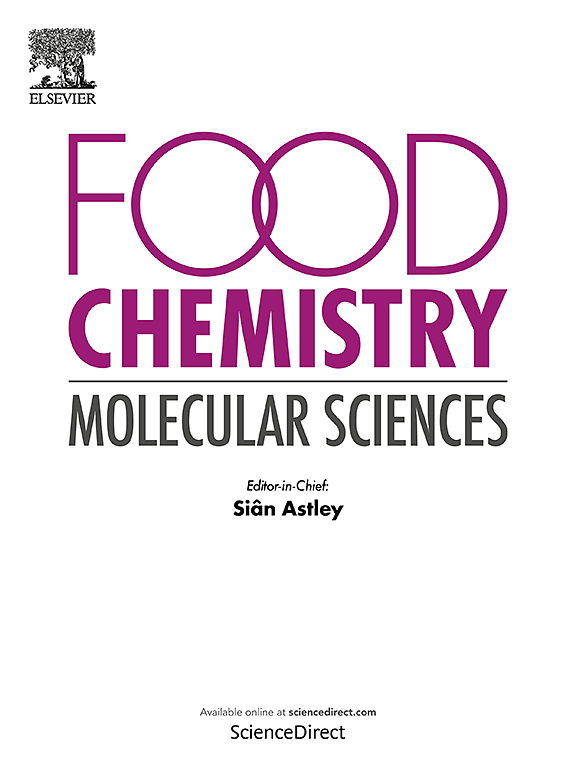The use of vitamin E in ocular health: Bridging omics approaches with Tocopherol and Tocotrienol in the management of glaucoma
IF 4.1
Q2 FOOD SCIENCE & TECHNOLOGY
引用次数: 0
Abstract
Vitamin E, encompassing tocopherols and tocotrienols is celebrated for its powerful antioxidant properties, which help neutralize free radicals and protect cells from oxidative damage. Over the years, research has shown that both tocopherols and tocotrienols offer significant benefits, including protection against radiation damage, cholesterol regulation, cardiovascular health, and neurological disorders. This wide range of benefits highlights the need for further exploration of vitamin E’s role in managing various diseases. One particularly promising area is its potential application in treating ocular diseases like glaucoma. Despite advances in treatment, current options have limitations, making the investigation of alternative approaches crucial. Omics technologies, which allow for a detailed examination of biological systems, could provide valuable insights into how tocopherols and tocotrienols work at a molecular level. Their neuroprotective and antioxidative properties make them promising candidates for glaucoma management. Additionally, the sustainability of vitamin E is noteworthy, as by-products from its production can be repurposed into valuable resources for nutraceuticals and pharmaceuticals. As research continues, integrating omics technologies with the study of vitamin E derivatives could unveil new therapeutic possibilities, further enhancing our understanding of its diverse health benefits and its potential role in preventing and managing diseases.
维生素 E 在眼部健康中的应用:利用生育酚和生育三烯酚管理青光眼的全息方法
维生素 E(包括生育酚和生育三烯酚)因其强大的抗氧化特性而备受赞誉,它有助于中和自由基,保护细胞免受氧化损伤。多年来的研究表明,生育酚和生育三烯酚都具有显著的益处,包括防止辐射损伤、调节胆固醇、保护心血管健康和神经系统疾病。这些广泛的益处突出表明,有必要进一步探索维生素 E 在控制各种疾病方面的作用。其中一个特别有前景的领域是维生素 E 在治疗青光眼等眼部疾病方面的潜在应用。尽管在治疗方面取得了进展,但目前的选择仍有局限性,因此研究替代方法至关重要。Omics 技术可以对生物系统进行详细检查,它可以为了解生育酚和生育三烯酚如何在分子水平上发挥作用提供有价值的见解。它们的神经保护和抗氧化特性使其成为治疗青光眼的理想候选药物。此外,维生素 E 的可持续性也值得注意,因为其生产过程中产生的副产品可以重新利用,成为营养保健品和药品的宝贵资源。随着研究的不断深入,将全息技术与维生素 E 衍生物的研究相结合,可能会揭示出新的治疗可能性,进一步加深我们对维生素 E 的各种健康益处及其在预防和控制疾病方面的潜在作用的了解。
本文章由计算机程序翻译,如有差异,请以英文原文为准。
求助全文
约1分钟内获得全文
求助全文
来源期刊

Food Chemistry Molecular Sciences
Agricultural and Biological Sciences-Food Science
CiteScore
6.00
自引率
0.00%
发文量
83
审稿时长
82 days
期刊介绍:
Food Chemistry: Molecular Sciences is one of three companion journals to the highly respected Food Chemistry.
Food Chemistry: Molecular Sciences is an open access journal publishing research advancing the theory and practice of molecular sciences of foods.
The types of articles considered are original research articles, analytical methods, comprehensive reviews and commentaries.
Topics include:
Molecular sciences relating to major and minor components of food (nutrients and bioactives) and their physiological, sensory, flavour, and microbiological aspects; data must be sufficient to demonstrate relevance to foods and as consumed by humans
Changes in molecular composition or structure in foods occurring or induced during growth, distribution and processing (industrial or domestic) or as a result of human metabolism
Quality, safety, authenticity and traceability of foods and packaging materials
Valorisation of food waste arising from processing and exploitation of by-products
Molecular sciences of additives, contaminants including agro-chemicals, together with their metabolism, food fate and benefit: risk to human health
Novel analytical and computational (bioinformatics) methods related to foods as consumed, nutrients and bioactives, sensory, metabolic fate, and origins of foods. Articles must be concerned with new or novel methods or novel uses and must be applied to real-world samples to demonstrate robustness. Those dealing with significant improvements to existing methods or foods and commodities from different regions, and re-use of existing data will be considered, provided authors can establish sufficient originality.
 求助内容:
求助内容: 应助结果提醒方式:
应助结果提醒方式:


